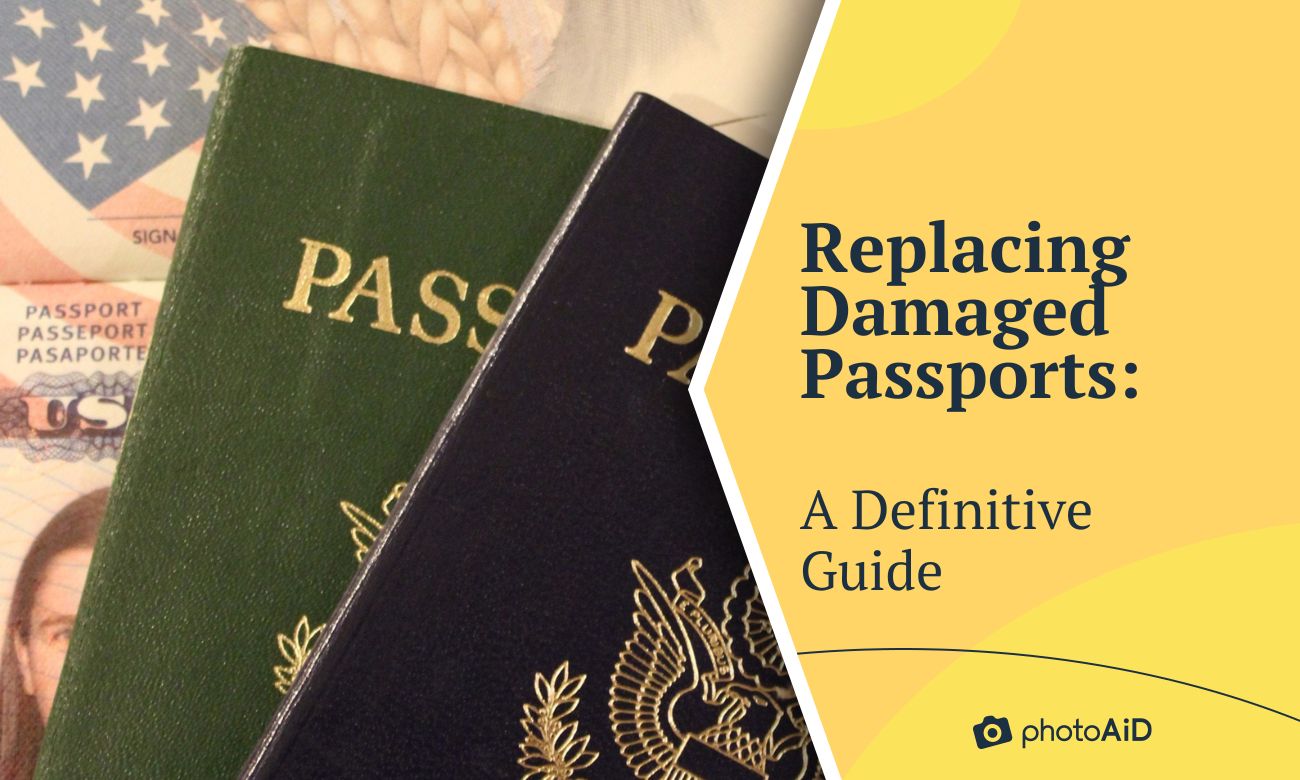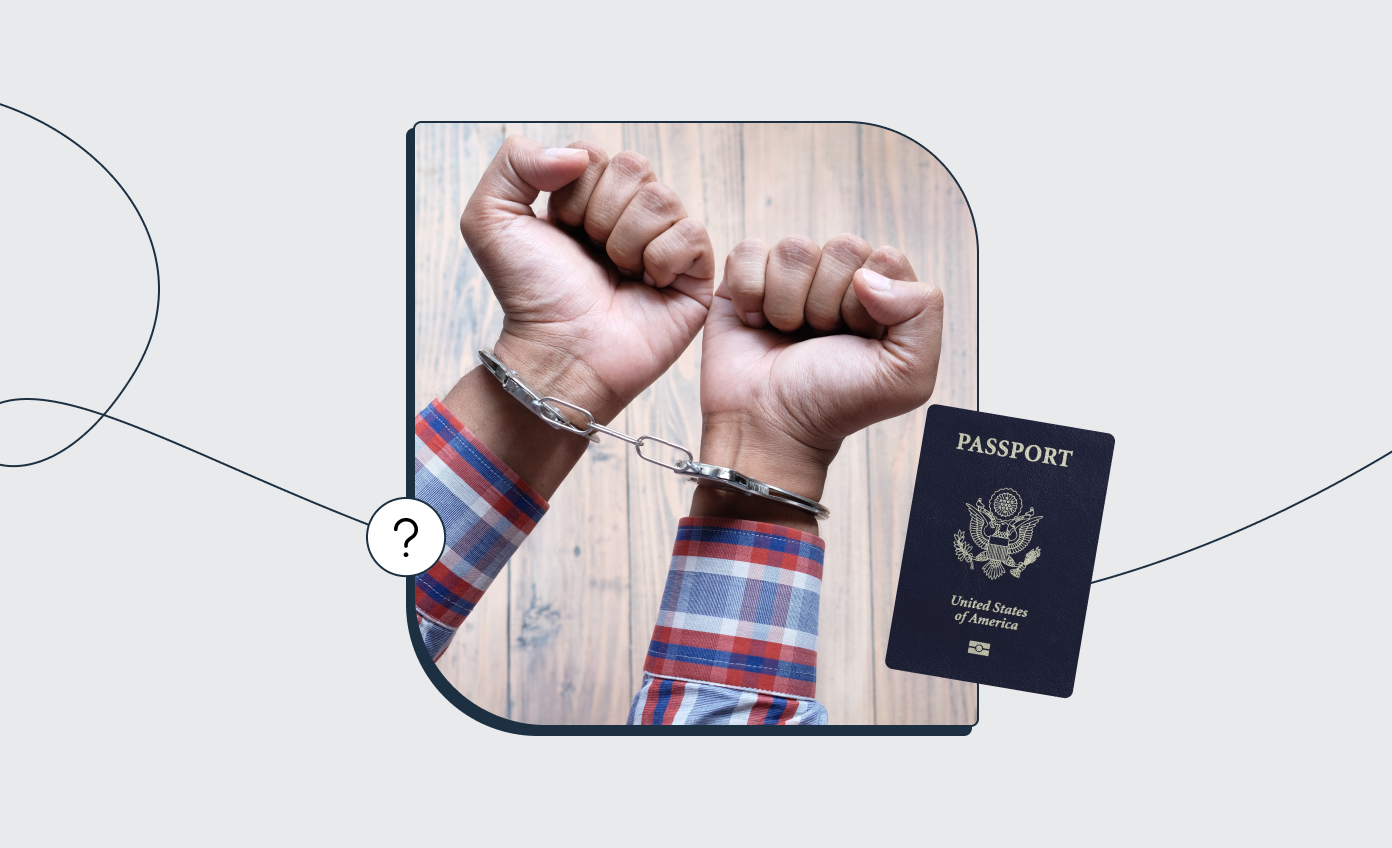Taking a load out of the dryer, you feel something strange in one of your pant pockets.
It’s not your wallet, but…
A freshly-washed U.S. passport, all sparkly and clean.
“Perhaps the passport can be salvaged?” you think while searching the internet to find information about replacing damaged passports.
Here at PhotoAiD®, we’ve released a definitive guide to assist individuals with this query. Keep reading to find out what constitutes a damaged U.S. passport and how to go about getting a replacement. Everything is listed below, including an easy-to-follow step-by-step guide.
Get a compliant passport photo in 3 minutes with PhotoAiD’s passport photo maker.
- Upload or take a photo.
- Let the PhotoAid Al check and fix it.
- A compliance expert will verify the result.
- Download or order a print. Done!


Get a digital passport photo or order prints with help from PhotoAiD®
100% acceptance, expert verified
2x money-back guarantee
3 minutes and done
11,000,000+ happy users
I was pressed for time and couldn’t get hold of a photographer. I found PhotoAiD, took a selfie, uploaded it, and had a compliant passport photo almost instantly. Getting a photo for my baby girl was a breeze, too!
Replace a damaged passport: damage vs. normal wear and tear
One of the most common questions surrounding this topic is, “how does one determine whether a passport is damaged beyond normal wear and tear?” Does a scratch on the back of the passport require an immediate replacement? What about a subtle coffee stain on one of the pages?
The Department of State considers a passport damaged (and ineligible for use) if its composition, physical structure, or microchip, has noticeable changes from its original form.
This includes malfunctioning chips, torn or cut pages, water damage, fading or sun damage, or the addition of illegal entries, markings, or photographs.
Given the State Department’s definition, the following conditions require an individual to submit a new passport application, in person, at a passport acceptance facility (along with a signed statement explaining the damage).
- water (or other liquid)-damaged passport;
- ripped or torn passport (any page including the cover);
- mutilated passport (e.g., bends, animals bites);
- information or picture page that is faded, has runny ink, or whose lamination has begun to peel.
As a rule of thumb, it’s always better to replace a damaged passport than face the possibility of rejection when trying to cross an international border. A new passport is cheaper than missing a flight due to an invalid document.
Have a damaged passport and need some biometric photos in a hurry? Trust PhotoAiD® to deliver government-compliant photos anywhere in the U.S.—we do have a stellar 4.6 ⭐ rating on Trustpilot.
Check out these related articles:
- Help! I Lost My Passport, and I Fly Tomorrow [2023 Guide]
- Where to Take Passport Photos in the U.S. [7+ Ideas]
How to replace a damaged passport: step-by-step
If your U.S. passport bears any of the damage described in the previous section, it’s time to apply for a new passport. In this scenario, applicants are not allowed to access passport services by mail or online, as it’s customary for passport renewal.
An in-person visit at a local passport acceptance facility is required since damaged passports, just like a lost or stolen passport, cannot be renewed by mail. Here at PhotoAiD®, we’ve prepared a step-by-step guide to assist you with the process:
Step #1: Prepare all the necessary documents required to have a damaged passport replaced, including:
- proof of U.S. citizenship (birth certificate or expired passport);
- Form DS-11;
- photocopy of state-issued photo ID, such as a driver’s license (front and back);
- 1 (one) 2×2” government-compliant passport photo;
- Letter addressed to the “U.S. Department of State” explaining how the passport ended up damaged; signed in blue or black ink.
- 2 (two) checks: 1 (one) made out to “U.S. Department of State” for $130 for the passport fee; 1 (one) for $35 for the Passport Acceptance Agent fee.
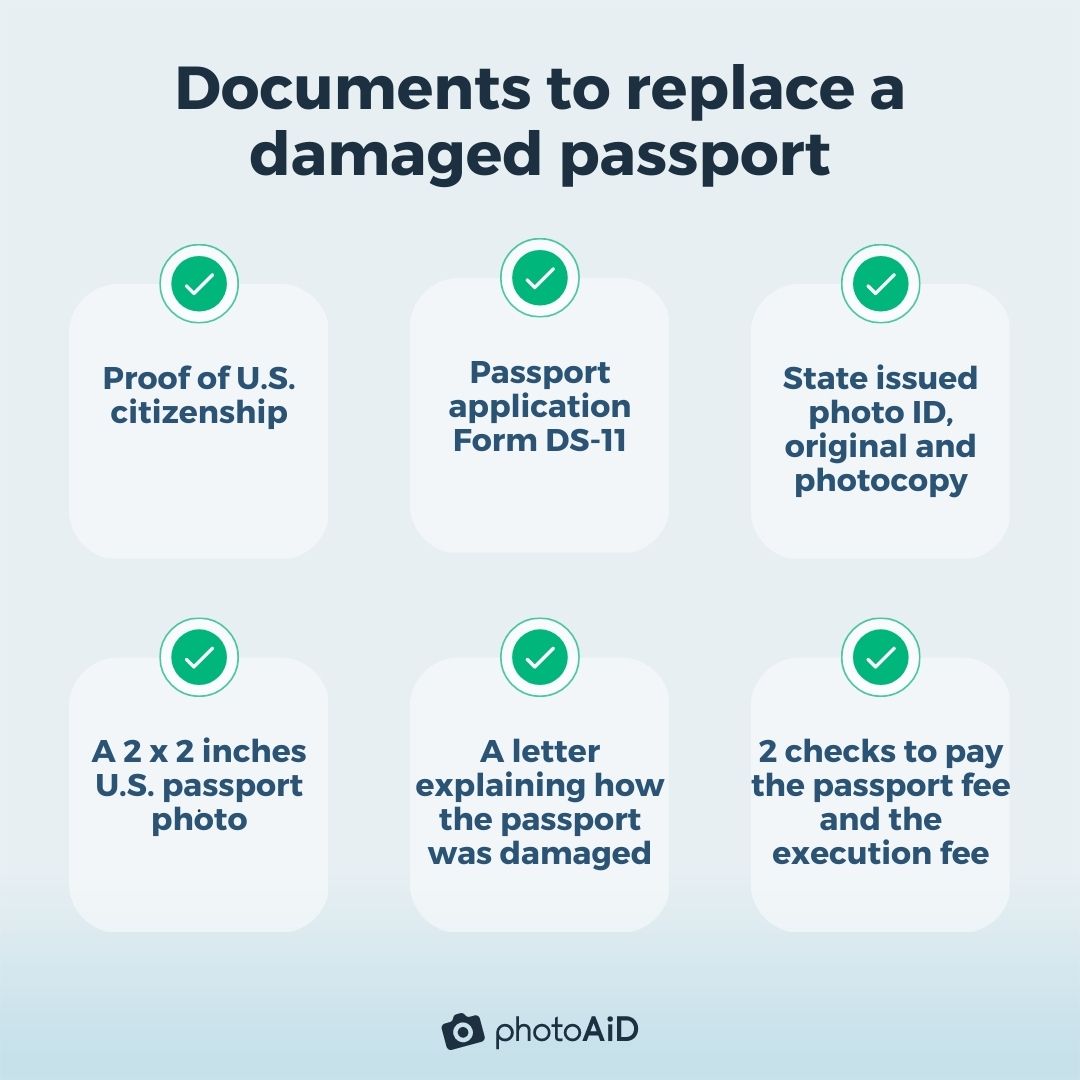
Step #2: Find your nearest passport acceptance facility using the U.S. Department of State’s Facility Search Page and book an appointment.
Step #3: Submit the application (along with all the documents described in Step #1) during your appointment.
Step #4: Wait for your new passport to arrive; routine processing is currently 6 (six) to 9 (nine) weeks.
Applicants can also opt for expedited service by paying an additional $60 to the $130, made payable to “U.S. Department of State” ($190 total), to receive their replacement passport sooner—currently set at 3 (three) to 5 (five) weeks.
Replace your damaged passport photos in a flash with PhotoAiD®
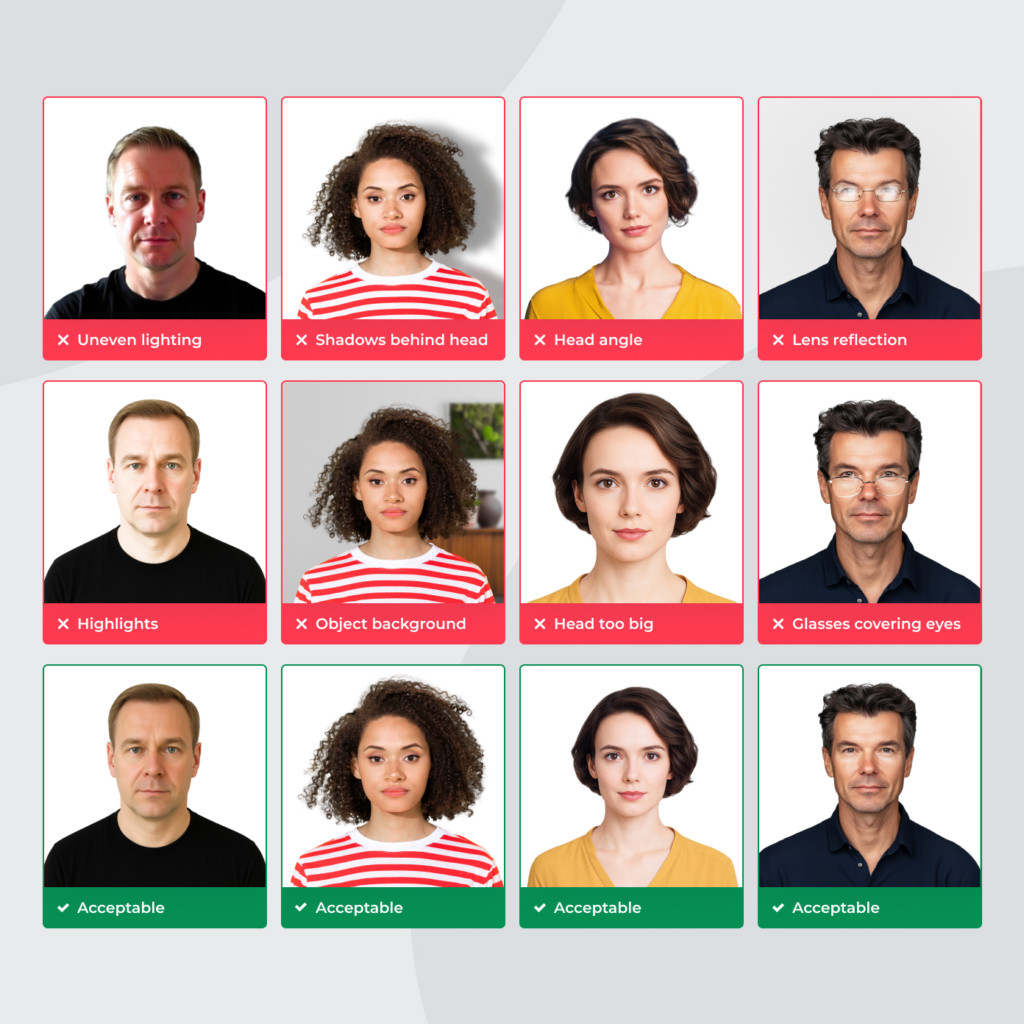
Dealing with a damaged passport can be frustrating, especially with impending travel on the horizon. Take the stress out of getting government-compliant passport photos by using PhotoAiD®’s dedicated mobile application (available on Android and iOS) to get new photos quickly and easily.
Aside from being convenient and intuitive, our app or web-based tool also comes with one of the best guarantees in the business: 100% compliance or double your money back on all passport photos.
Finally, with delivery to anywhere in the U.S. in 3 business days, you can start replacing your damaged passport sooner.
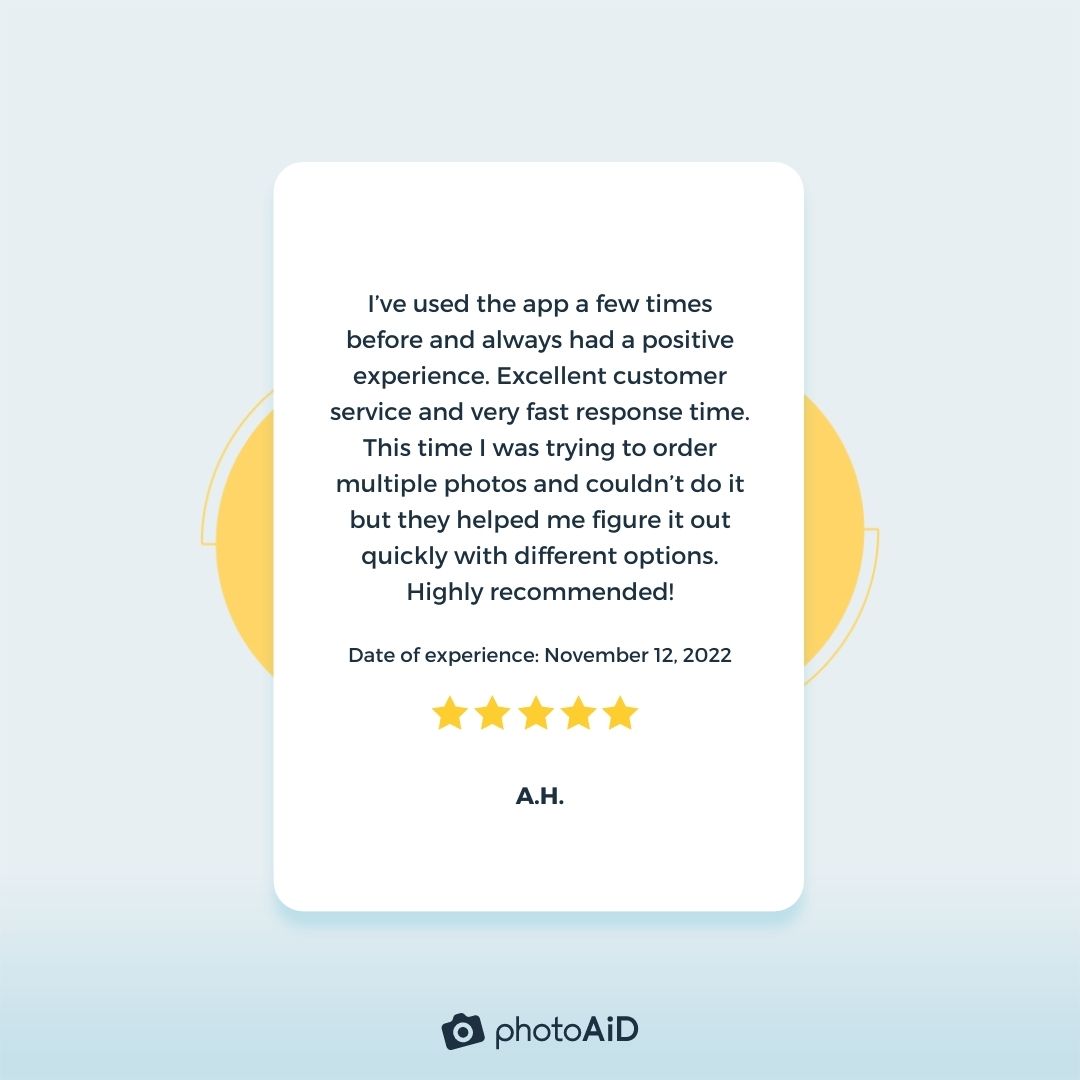
Damaged passport replacement: FAQ
Read through the following questions and answers for more information about replacing damaged U.S. passports.
What is considered a damaged passport?
Can you renew a damaged passport?
What if my passport is water-damaged?
How to fix a water-damaged passport?
How do I replace a damaged passport?
What does it cost to replace a damaged passport?
How long does it take to replace a damaged passport?
Finally, with proof of imminent travel (within the next 14 calendar days), it is possible to replace your damaged passport sooner; however, this will require an appointment at a regional passport acceptance facility (by calling 1-877-487-2778).
When to replace a damaged passport?
Do I need to make an appointment to replace a damaged U.S. passport?
What are the documents needed to replace a damaged passport?
Closing thoughts
It doesn’t matter whether you’ve accidentally washed your U.S. passport or spilled coffee on it; by following the step-by-step guide mentioned above, we’ve hopefully alleviated some of your worries associated with replacing damaged passports.
With a government-compliant passport photo from PhotoAiD® in hand, applicants can breathe a little easier knowing their photos are guaranteed to be compliant. Then, it’s just a matter of submitting the appropriate documents and waiting 6 (six) to 9 (nine) weeks for the new U.S. passport to arrive.

Simon Wojtyczka is a writer with experience living and working in 7 countries, each adding depth to his work. Holding a Master’s in Applied Linguistics, he has a profound grasp of language and its intricate ties to culture.
